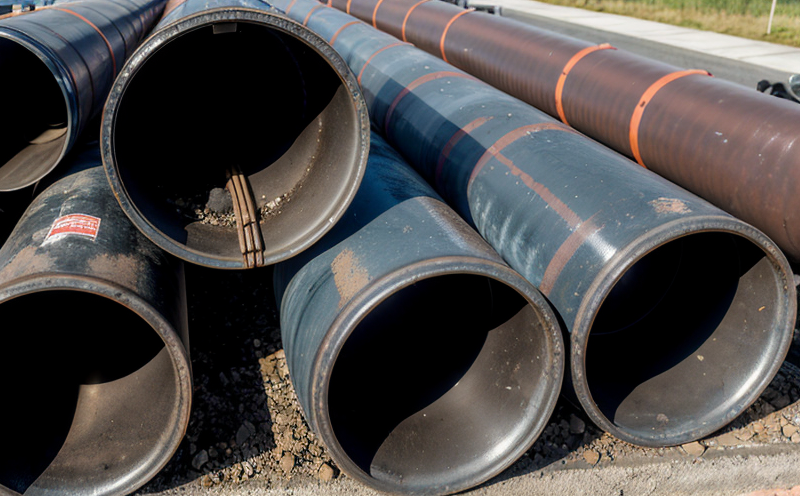DIN EN ISO 9969 Ring Stiffness Testing of Plastic Pipes
The DIN EN ISO 9969 standard provides a comprehensive framework for the ring stiffness testing of plastic pipes. This method is critical in ensuring that pipe materials meet the necessary performance criteria, particularly in terms of structural integrity and resistance to external loads.
Ring stiffness tests are conducted on specimens cut from pipes or tubes. The purpose is to determine how much a specimen will deform when subjected to an applied load over its circumference. This test is especially important for plastic pipes that are used in various applications, including drinking water supply systems, irrigation, and industrial processes.
According to the standard, specimens are typically cut from the pipe material and machined into a ring shape with a specific diameter and thickness. The specimen is then clamped at two points, and an axial load is applied until it reaches a predetermined value or deformation level. The maximum load that can be sustained before permanent deformation occurs is measured as the ring stiffness.
The test conditions are strictly defined in DIN EN ISO 9969 to ensure consistency across different laboratories and testing facilities. These include temperature, humidity, and environmental factors that could affect the material's performance. The standard also specifies the use of specific types of equipment, such as load cells and clamping fixtures, which must be calibrated regularly.
For accurate and reliable results, it is essential to follow the procedure outlined in DIN EN ISO 9969 meticulously. This includes precise specimen preparation, correct application of loads, and careful measurement of deformations. The test apparatus should be capable of applying controlled axial loads with high precision, ensuring that the results are repeatable and reproducible.
The ring stiffness value is a crucial parameter in assessing the quality of plastic pipes. It indicates how well the material can resist deformation under load without compromising its structural integrity. This characteristic is particularly important for applications where the pipe must maintain its shape and function under varying environmental conditions.
Understanding the ring stiffness of plastic pipes is vital for ensuring that they meet the requirements set by regulatory bodies and industry standards. For instance, in drinking water supply systems, the material must not only be safe but also capable of withstanding the stresses imposed by the system's operation. Similarly, in irrigation applications, the pipe needs to resist soil pressure without deforming or leaking.
The test results from DIN EN ISO 9969 are used extensively in quality control and product development processes. They help manufacturers identify any weaknesses in their materials and make necessary adjustments to improve performance. Additionally, these results can be used as part of the documentation required for compliance with international standards.
- Environmental Factors: Temperature and humidity must be controlled during testing to ensure accurate results.
- Specimen Preparation: Specimens are cut from pipes using specific diameters and thicknesses to ensure consistency.
- Load Application: Controlled axial loads are applied until a predetermined deformation level is reached.
- Measurement: Deformations are measured accurately to determine the ring stiffness value.





